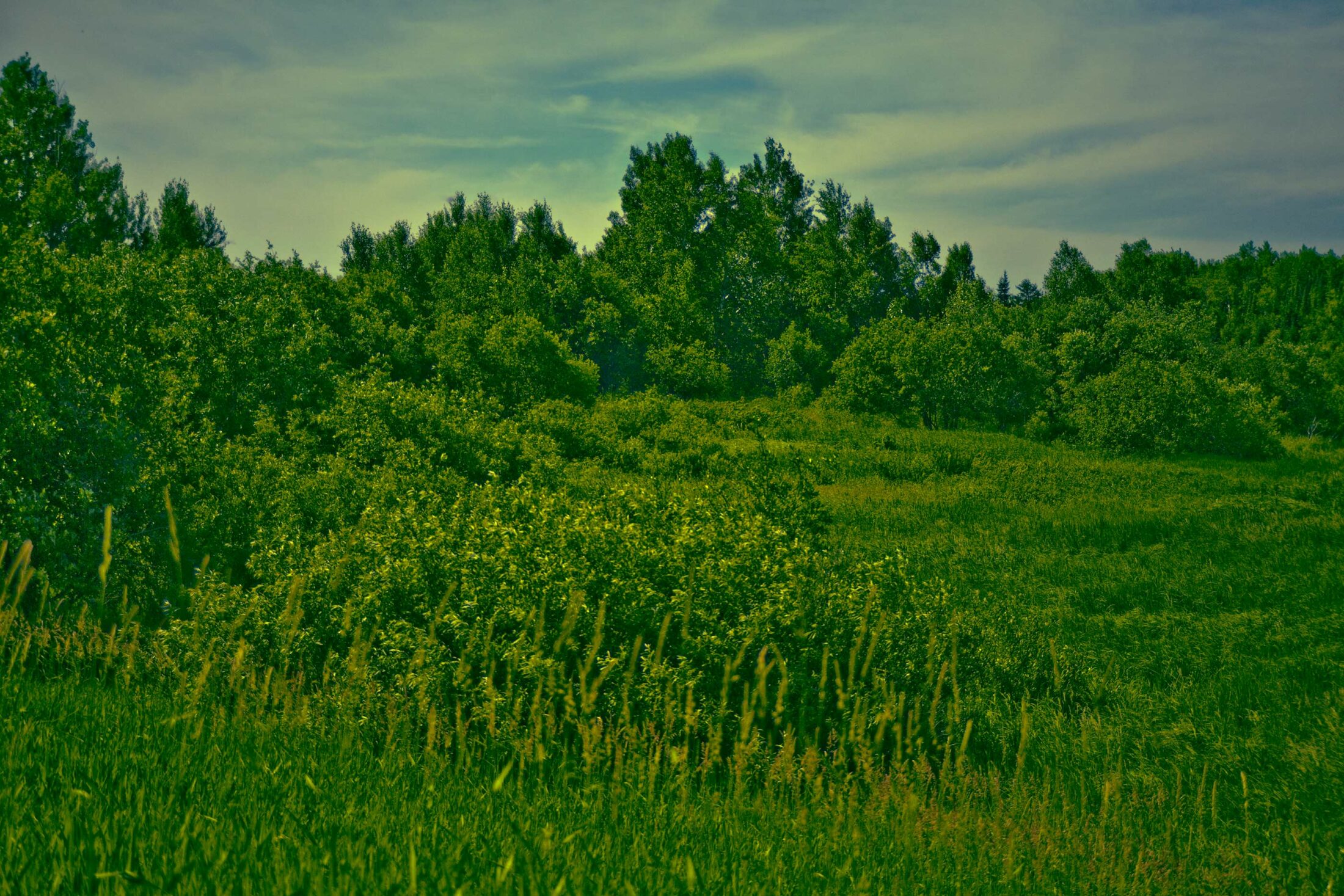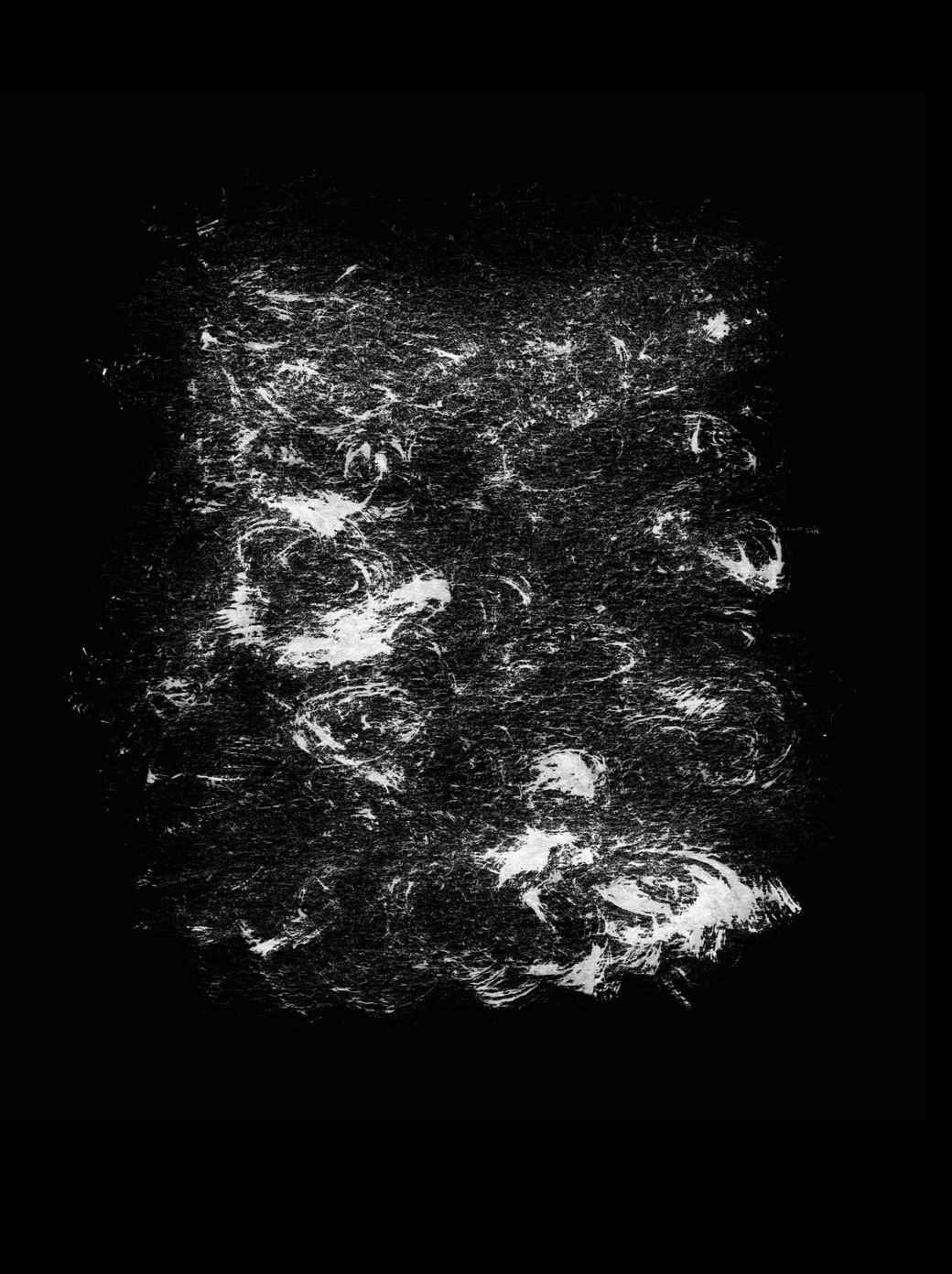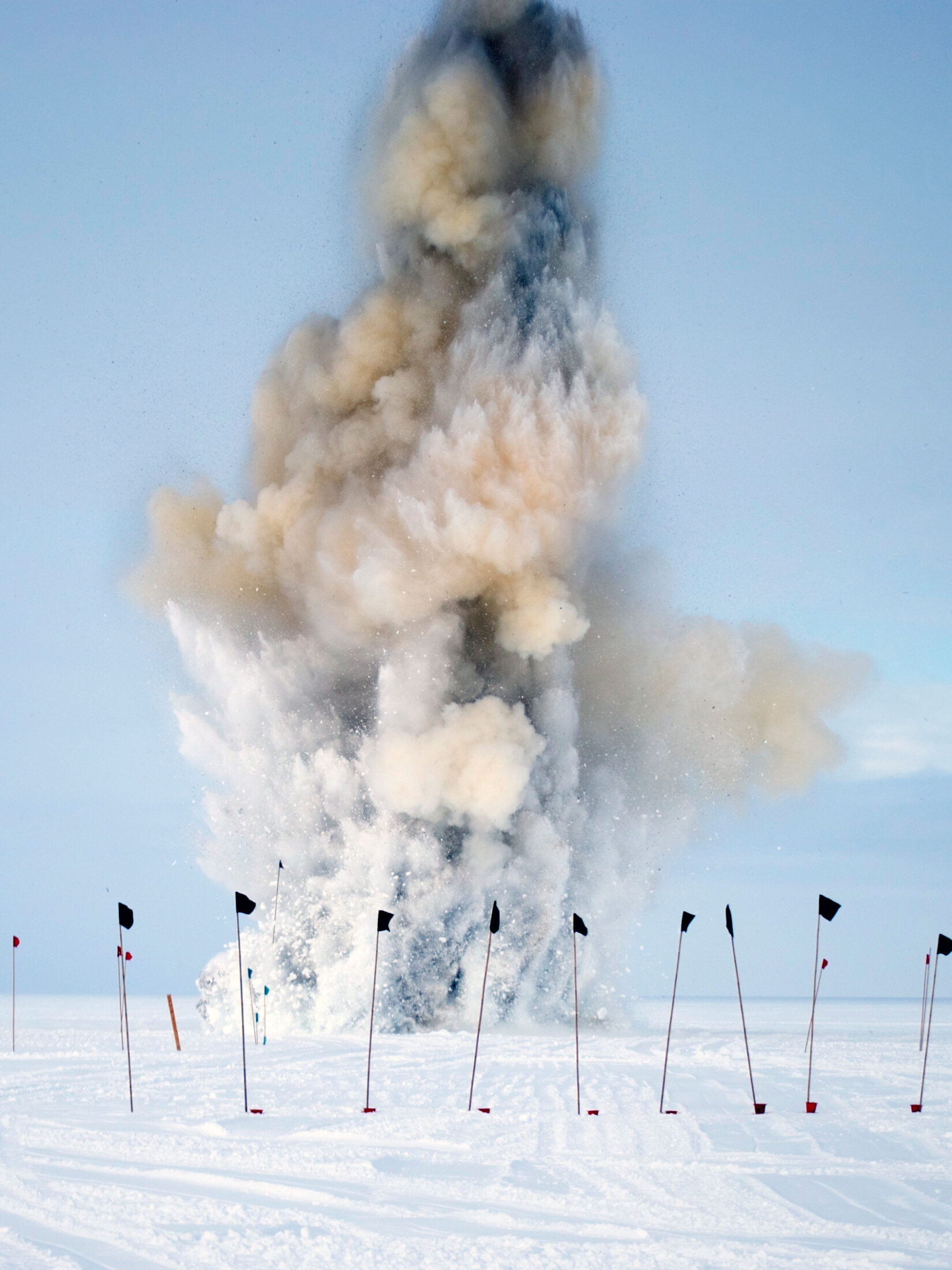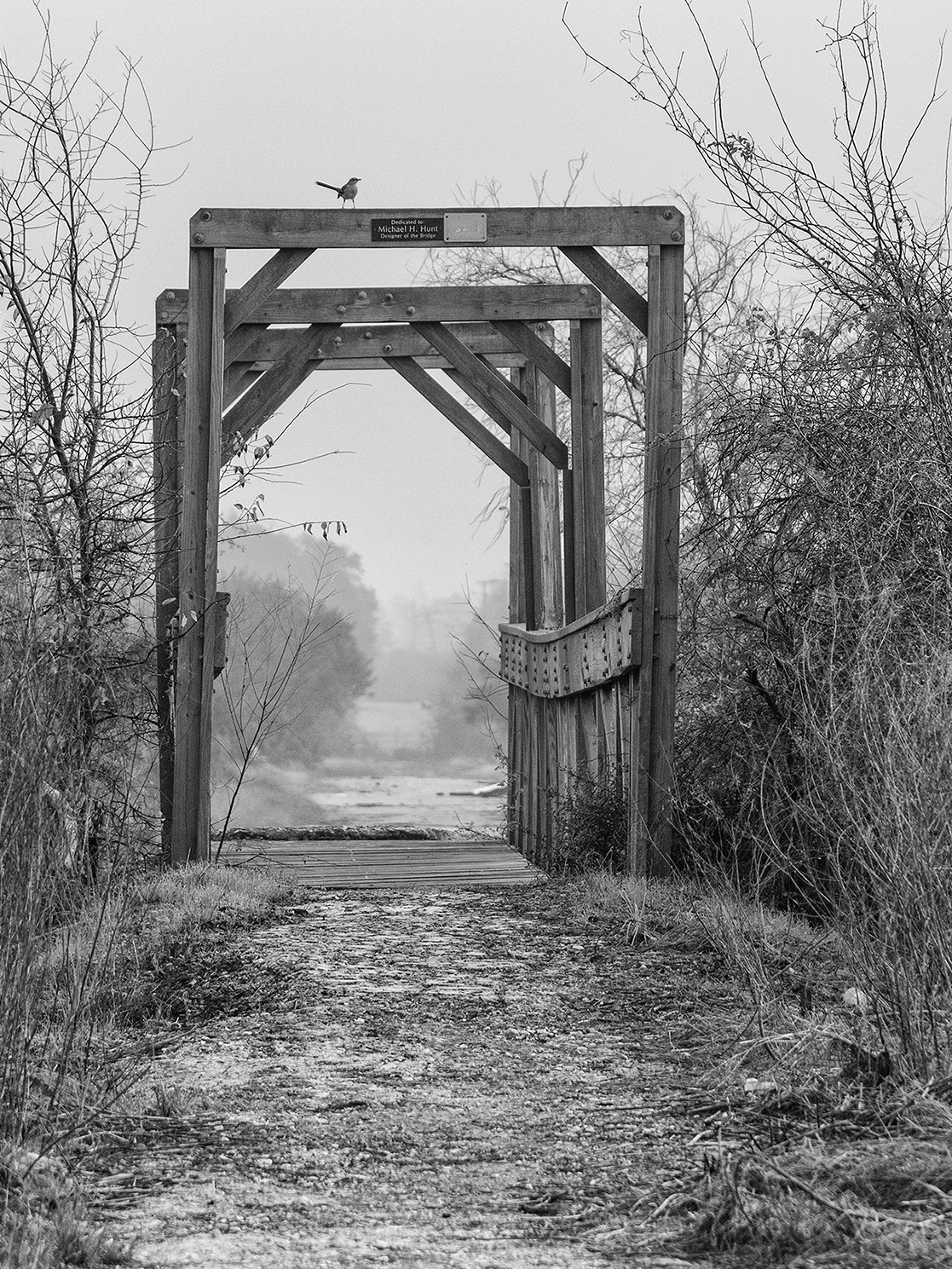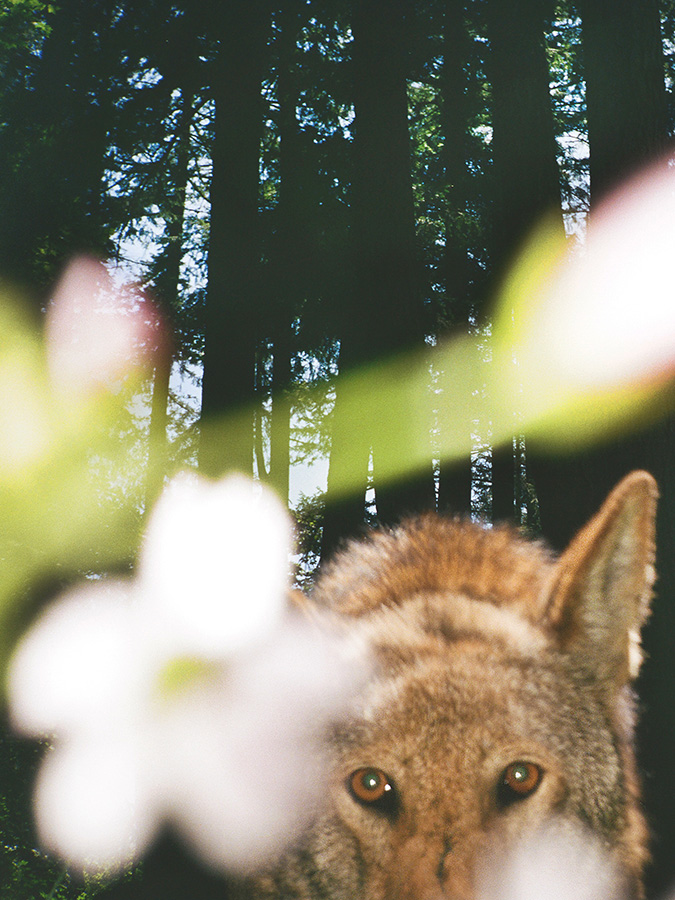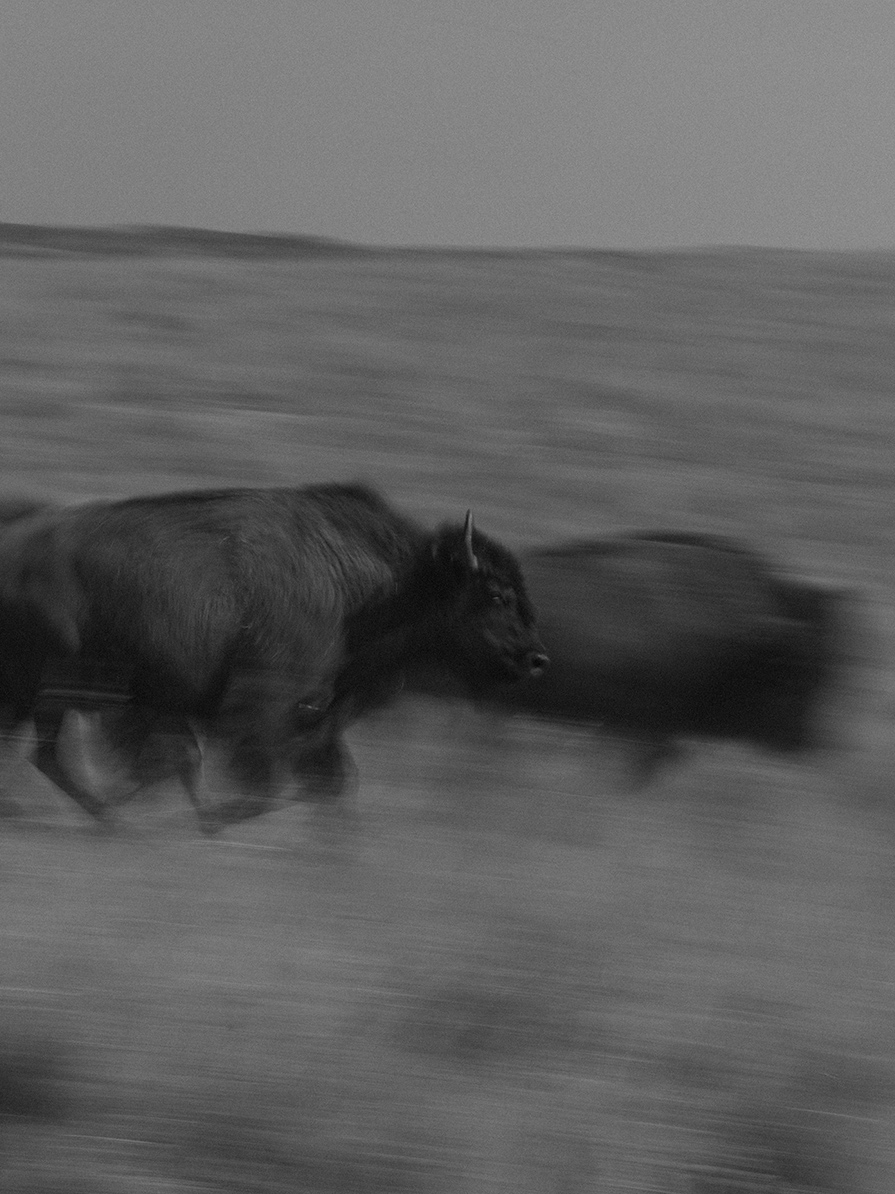Natalie Rose Richardson was born in New York City to a long line of border-crossers and proud people of blended heritage. Her poetry and prose has appeared or is forthcoming in Poetry Magazine, Narrative, The Adroit Journal, Brevity, Orion Magazine, Arts & Letters, The London Reader, and Chicago Magazine. She has received awards, residencies, or fellowships from Poetry Society of America, The Poetry Foundation, The Newberry Library, The Luminarts Foundation, Scholastic Art & Writing Awards, and the National Student Poets Program, among others. She is a 2020 Pushcart Prize and a Best New Poets nominee.
With the help of a historian, ornithologist, and birds themselves, Natalie Rose Richardson begins to embody a new quality of attention. Traveling from Chicago to South Carolina, she follows a migration path that brings birdwatching together with her own layered history.
I.
Sherry Williams—opening the door with an assaulting smile and waving away my apology with her hands—does not seem to care that I am late.
I’ve come to meet her at her workplace, the Bronzeville Historical Society, located in a nondescript two-story brick building on the corner of 45th and King Drive on Chicago’s South Side. Google Maps sent me to the old address—ten blocks north—and the only indication of the new office on 45th Street is an 8 1/2-by-11-inch printer-paper sign taped to a door on the bare building’s south face. It is June, which means it is hot. The air conditioning inside blows strongly enough to fan my hair.
Sherry is the first person I’m interviewing for an essay on birdwatching and the Great Migration. I’m not yet sure how these two subjects will come together, but Sherry was recommended to me as someone zealous about both. As director of the Bronzeville Historical Society, she is not only passionate about African American history, part of her role also involves rallying her urban South Side community’s interest in nature. Most recently, she’s piloted public programs that encourage people to meditate on the relationship between bird migrations and the Great Migration. I quickly see why Sherry has been the subject of numerous local news articles and the recipient of a prestigious Audubon Society grant: she is charismatic, and she wears her enthusiasm for her work like a colorful shawl.
Despite my own interest in black American history, the Great Migration is a story I’ve largely overlooked—a neglected seed in my own backyard. During the Great Migration, when six million black Southerners moved northward to flee racial violence and pursue economic opportunities, the city of Chicago received an enormous influx of people: roughly seventy-five thousand—second only to New York. Now, Sherry shows me records of some of the people who migrated here at that time.
“We’ve been archiving obituaries,” she explains to me as we walk into the main sitting room which is cluttered with boxes and files. “We’ve uploaded over twelve hundred already to the online database, so now anyone can search them.”
From one box she plucks out a cardstock obit with a grainy black-and-white image of a young dark-skinned woman smiling. “We do it for the community,” she tells me. I nod enthusiastically. After graduating college, I worked for an organization on Chicago’s South Side that archived objects of black history and exhibited them at no charge for the community. I recall giving tours to middle school students on field trips from nearby Chicago public schools who gawked at the lawn jockeys arranged behind glass, the pristine library shelved with books by black authors, rows of afroed, glittering funk and Motown records. To Sherry I offer up an anecdote about my grandmother, who years ago cataloged my own family’s genealogical records. Her search for our ancestry ended in Louisiana, with one blurry ledger listing purchased enslaved people. Printed at the top, in elegant cursive, was the planter’s last name, Richardson—the origin of my last name and my family’s American story, proof of sale, a haunting relic that in a strange way conferred relief: we existed, we are not untraceable.
“Okay, so you get it,” Sherry replies, an easy current of laughter moving through her sentence. She pivots towards the far wall where a cluster of framed newspaper articles and photographs are hung: “Let me show you around.”
The walls are adorned with photographs of black Americans and historical records (in one corner is an entire exhibit of Aunt Jemima paraphernalia—“this ad,” Sherry points to one frame in the center of the exhibit that seems to offer up a story about the original Aunt Jemima—“is a straight-up lie”). There is a cardboard cut-out of Obama that must be seven feet high. Harold Washington, the first black mayor of Chicago, flashes his movie-star smile from enormous frames in every room we enter (save for the small kitchen, where Sherry offers me mini bags of chips from a Costco-sized assorted box). By the time we sit down in a conference room to talk, I’ve stepped through a collage of black Chicago history. I feel the same stirrings I did reading my great-great-great-grandfather’s name on that slave ledger. The stories told by these artifacts includes my own family’s legacy, which snakes like a dark river from Louisiana to Hope, Arkansas, then Fort Wayne, Indiana, and finally to Chicago: where I grew up in a three-story house just a few miles from where Sherry and I stand now.
The conversation is easy; I don’t glance at my watch once. We both finish our chips and lick our fingers for lack of napkins. Sherry speaks elegantly about the Bronzeville Historical Society’s work cataloging archives and educating her community about their history. She effortlessly drops names and dates in her speech (“Fannie Lou Hamer—look her up—was the most prolific and persistent challenger of the Mississippi unjust systems,” she says at one point), and her language is at once folksy (she refers to her older relatives as “elders”) and politically refined (within a span of five or so minutes, she uses the words “infrastructure,” “suppression,” “economic opportunity,” “government indiscretions,” and the particularly striking phrase, “gridlocked by racism”).
Sherry also looks younger than she is. She speaks using the plural we as she discusses black community desires and issues; a subtle grammar that makes me feel like I’m at the table in my mother’s kitchen. “My daughter is your color—no, she’s even fairer than you,” she says unprompted at one point: “And my other daughter is blue-black—the kind of color that has another color beneath it.”
I laugh in recognition, thinking of the gulf-wide color spectrum in my own blended family, and she moves one dark hand in the air, gesturing as if to a window. “Other people think we are all one thing,” she chuckles softly. “But we know the truth: we are so many different things.”
It takes some effort for me to redirect the train of her dialogue towards the subject I’ve come to talk about. “So,” I finally ask: “What got you interested in birds?” Sherry giggles.
“My parents grew up in the Delta,” she says, and I sit back in my seat, sensing that she is a natural storyteller by the way she migrates through the story, her answers beginning in an unexpected place then circling back to my question with meandering grace. “And twice a year we’d drive down from the city to visit family.”
It was over fourteen hours by car. Sherry describes being cooped up in the back seat, unable to stretch her legs for what felt like days, then arriving at her grandparents’ house, where she would leap from the car and immediately lope down a hill to the fishing holes to investigate “worms, bees, bugs, flowers, and medicinal plants.” The list of wonders she discovered there feels endless.
“I would learn about these medicinal practices,” Sherry says with a shiny glaze on her eyes, “and at night I learned constellations. And of course, that’s where I saw birds.”
Before she says more, and without prompting, Sherry picks up the historical narrative that has been the throughline of our entire conversation so far, threading together the two topics which beckoned me to her in the first place.
“Birds are always looking for shelter—looking to thrive. Blacks came here in the same way by the thousands. To put their buckets down and build. To me it’s about what moved with us.”
I nod, taking notes.
“I just love birds,” Sherry says, chuckling.
I smile a bit sheepishly and explain that while history interests me greatly, I don’t really get the fascination with birds. I don’t pay much attention to them.
“I guess—” I start to say, thinking of the most diplomatic way to put it. Sherry’s beginning to laugh at whatever expression is on my face. “Birdwatching is just not something that has ever seemed useful to me.”
Sherry thinks for a moment and her face is serious.
“What’s the usefulness of a crow?” she says, and the question jars me. “They are so easily dismissed … But—most people don’t know this—crows moving their beaks around in a field end up bringing seeds from that place into your yard.”
I’m suddenly interested. “Like stewards of the land,” I say.
Sherry nods. “They fertilize the earth.”
II.
What is simply background noise for some people is, for others, the lifeblood of a place.
Until last summer I rarely considered birdwatching at all. I’m a city person, raised on a busy street only six blocks from the “L” trains that clattered through Chicago. My backyard growing up was mostly concrete, with a sorry square of a vegetable garden wilted in one corner next to our house. The only landscapes I’ve lived in are Chicago and now New York—where trees are few and city parks are invaded with noise from nearby traffic.
Birdwatching seemed like an incredibly boring hobby with no discernible goal; not like wheel-throwing or jogging or even hunting (which, in its own way, is the act of closely watching animals, but holds a sort of primal appeal I can much better understand). So when attempting to start a piece about birding and bird migrations, I procrastinated. I half-heartedly asked my friends and family “What do you think about birds?” to which I received mostly half-hearted replies. (It seems that unlike most mammals, in whose soft endearing eyes we can often see a kindred soul, many of us have a hard time ascribing subjectivity to birds. My favorite short story by the writer Clarice Lispector, titled simply “A Chicken,” reads: “…there were so many chickens that whenever one died another emerged that very instant as alike as if it were the same.”)
But one type of reply was consistent. Everyone I asked about birdwatching seemed to say, “Birds are everywhere,” followed by some derivation of “I honestly just don’t pay attention to them.”
What is simply background noise for some people is, for others, the lifeblood of a place.
I’ve just moved to New York for graduate school, and my trip back home to Chicago—where I meet Sherry and plan to visit bird sanctuaries—is consumed with work meetings at the Pritzker Pavilion in Millennium Park, which traps me in the northwest corner of 312-acre Grant Park every morning and evening for four days straight. Each day during my lunch break, in eighty-degree June sunshine, I do something I rarely did when I lived in the city: I walk the park.
It is a surprise how much I find myself marveling at its impeccable design, the million-dollar landscaping and art installations that beckon tourists: the glistening Bean, Crown Fountain with its many faces, Buckingham Fountain’s wedding cake tiers. I walk the same route from Millennium Plaza across the gleaming, extraterrestrial-looking BP pedestrian bridge to the lakefront, where I stare aimlessly for a while at the glittering water then walk back. By the time the show finishes and I get around to visiting the bird sanctuaries elsewhere in the city, it is entirely lost on me that for the past four days I’ve been walking through one. (“Excellent for migrant passerines,” the Chicago Field Museum website notes about Millennium Park, and “popular with birders who work in downtown Chicago and want to get in some birding before work or during their lunch hour.”) It strikes me that my attention has been more on the man-made structures, which feel familiar to me—the habitat of my youth.
I feel exhausted from the weekend’s engagements and the oppressive heat, which makes a sweaty suit of my entire body. Wandering the various bird sanctuary paths scattered across the city—without air conditioning, without ice water—feels like a chore. I realize with some guilt as I walk the various mulched paths that my attention wanders. I have to actively concentrate on my surroundings so as not to miss them. Much of my time walking the bird sanctuaries is spent internally berating myself for not being more of a nature person—whatever that means. I think of Sherry as a child, cooped up in the back seat of her family’s car for the sixteen-hour drive to Mississippi, and try to open the anxious door of my mind to extend my imagination into the landscape. But it doesn’t work. I’m trapped inside my head.
At the sanctuary hugging the beach at the South Shore Cultural Center, smoke from various nearby barbecues wafts over the prairie grass, and the bugs—attracted, no doubt, to the moisture rising from numerous swampy ponds—are biting. In the distance, crowds of people bump hip-hop music from speakers and children splash in the shallows, inflatable wings on their arms. The well-maintained sanctuary paths maze only a few hundred yards from the Cultural Center’s grand ballroom, where Barack and Michelle cut cake at their wedding reception; and beyond, two miles west as the crow flies, is the Stony Island Arts Bank, a bank-turned-museum where I worked for a year after graduating college, giving archival tours to those wide-eyed middle schoolers. On my walk through the prairie, I pass the exact spot where my coworkers and some of the neighborhood matriarchs held a send-off barbecue for me when I left for New York—Amina, Gabe, raspy-voiced Ms. D, kind Christine, Patty with her gold tooth—all of us hauling ice coolers and hot dogs and bottles of hard liquor through the sanctuary and to the water’s edge. We stayed until midnight getting tipsy with solo cups and charred meats, the sanctuary’s wildlife held at bay by our raucous laughter and the gray wall of our bonfire’s smoke.
At the newly constructed bird sanctuary a few miles north, off 41st St. Beach, Lake Shore Drive hums only yards away, drowning out the sound of birds. Here I am fifteen blocks from my undergraduate university where I spent four years enduring the first adult depression of my life; and six blocks from the Bronzeville Historical Society, where Sherry Williams is archiving obituaries.
Last, I drive north on Lake Shore Drive to the Montrose Point Bird Sanctuary. The paths are familiar to me—only four blocks from the apartment where I lived for three years. I would walk there to clear my head, to procrastinate writing my graduate school papers. A real refuge. Fringed by people and noise, the sanctuary is remarkably quiet inside its canopy of trees, the silence broken only by the sounds of birds and wind through the reeds. Few people know about the unobstructed view of the skyline at the path’s edge, and in summer it is one of the lakefront’s best-kept secrets, where the water is deep and clear and only a handful of people can be found laying on towels on the warm concrete.
I find more memories in the sanctuaries than birds. I don’t see the birds so much as I hear them: a comforting dirge which is like the white noise against which my attention wanders through a landscape of memories. But the more time passes the more I realize I am not concentrating at all: my mind is wandering brazenly away from my surroundings, without regard for place or time.
And I don’t have binoculars. I have not downloaded a bird-identifying app on my phone. My attempts at birdwatching feel like being a tourist in another nation, where the wondrous truth of the place is inaccessible to me—I am too lazy and self-interested to access it.
I look for awhile and then I stop looking and go about my day.
III.
The eminent ornithologist J. Drew Lanham laughs easily when I tell him I’m honored just to be speaking to him on the phone. Drew, as I call him, is at his home in South Carolina (which he’s described as his “wild-like refuge”), and to prepare for our call I’ve been reading from his book of poems on the couch in my Brooklyn apartment. Outside sirens blare their ugly noise.
Drew is a professor and poet. As he begins to talk, he speaks in easy metaphors and images, with the same long, imaginative syntax of elegant prose. In contrast I feel clumsy and blabbering, never more so than when I chuck my first question across the phone line: “So what”—I pause here sheepishly—“would you say is the point of birdwatching?”
Drew laughs again and I exhale at the warmth of it. “Put simply,” he says, “birdwatching just attracts people with an affinity for obsession.”
He even has a term for this obsession, ODD: “ornithological distractive disorder.”
As I begin to describe the essay I’m writing, Drew is quick to point out that he thinks there’s an important distinction between the two words I’m using interchangeably: “birding” and “birdwatching.” Birding, Drew explains, is a trendier hobby that he feels at times loses sight of the birds themselves, whereas birdwatching is the act of centering the bird in one’s attention.
“I mean,” Drew explains, “you can’t even say ‘birdwatching’ as fast. The word itself requires you to pause.” He pauses. “When you go birdwatching, the bird is at the center of it.”
I ask what he thinks about the symbolism of birds—as an embodiment of freedom, for example.
“One of the first things we’re taught as scientists,” he says, “is not to anthropomorphize. To me, this means not losing sight of the bird in front of me.”
“Paying attention to the animal, and not what it represents,” I say.
“Right,” he replies. “But also, thinking of birds not as things to watch but as beings to celebrate.”
Drew very softly pronounces silent h’s, like in the words “white” or “while,” one of the few clues of his Southern heritage. And he doesn’t, despite his ample degrees, use any academic jargon or scientific words (except on two occasions, when he says “avian” and “anthropomorphizing”). Rather, it seems that he’s borrowing from the lexicon of poetry. Within five minutes, he’s using “feathered” as a verb.
When I mention I’ve talked to Sherry Williams in Chicago, Drew tells me he is familiar with her work.
“When I think of bird migrations and the Great Migration,” he posits, “I think not just about where it started, or where it ended. But about what exactly happened in the distance between the two.”
He continues: “I’ve spent a lot of time in spaces where there’s been pain and bitter history. Any teaching or watching I do in that place is circumspect. The quote-unquote natural landscape we are looking at was made by black hands. I try to enter those landscapes with my eyes wide open.”
It occurs to me that in order to really understand Drew’s words, I should enter one of the landscapes he’s talking about. South Carolina, I decide, is where I must go next.
“Do you feel like some landscapes are more prejudiced than others?” I ask. “Is that even a reasonable question?”
“Prejudice is everywhere. It just hides its hand when it throws the rock.” He laughs softly and his voice lilts a bit more into a drawl—“You know that one? My grandmother used to say that.”
He goes on: “To go into these places with your binoculars down and your eyes wide open—it doesn’t make it easier, but you can see what’s going on. Our landscapes here, and across much of this country, are open wounds. Those open wounds bear our attention.”
Much of our conversation revolves around gaze—the act of looking. I mention that on the subway that morning, I’d been reading an essay by Leslie Jamison in which she says that respect is to look and keep looking. Love, Jamison suggests, is focused attention.
“It’s not just watching,” Drew says when I ask what he thinks. “Watching isn’t necessarily taken as love to me, because it depends on who’s doing the watching.”
When I ask what he means by this, he is quick to reply: “A man in a blue uniform, for example…” and we both laugh somewhat sheepishly.
“Okay, true,” I say.
I ask him for an alternate definition of love, surprised at the turn our conversation has taken. Drew pauses before he answers.
“I would say love is focused attention with benevolent intent.” He pauses again and I imagine him at his desk in South Carolina, his brow furrowed, framed birds making flight-patterns on the wall behind him.
“It’s not enough to just look,” he adds. “You have to be genuinely aware of what you’re looking at.”
IV.
The paved road to Middleton is lined with Spanish moss–draped trees. The winding dirt path to the parking lot abuts a sloping lawn fat with sheep. The parking lot, with its gleaming fleet of cars and ceiling of willows, is crowded with cars—presumably tourists. And the glossy pamphlets at the ticket booth—neatly stacked in their clear, spotless case—advertise a hotel and spa.
I pay my twenty-five-dollar entry fee and enter the grounds, which are carpeted with wind-scattered flower petals, and I think this must be the place where The Notebook was filmed, and millionaires wed. Middleton Plantation, just outside of Charleston, South Carolina, is draped in the kind of beauty that requires no special gaze or attention—a stark contrast to its brutal history. Middleton’s landowner became one of South Carolina’s wealthiest planters, and at one point the plantation consisted of fifty thousand acres, worked by eight hundred enslaved persons.
The air is fragrant and humid. Heads of flowers litter the lawns. They are perfect and intact, as though they’ve been clipped with scissors, and in various states of decay. I have the sudden bizarre urge to string them together into garlands, which I might wear as a cape.
And there are young sycamore trees with delicate, deer leg trunks. Fountains gurgling their timeless songs. Chinese palms. Oaks. Chinese roses. Bamboo. How did it get here? How did any of it get here? The land here is bejeweled with species brought on ships for the former plantation owners’ delight. There are alligators and the white birds that stand on their reptilian heads like hats. Lizards, turtles, a woodland loud with insects. Swamps, rice fields, weeping willows—my favorites—a few people in tuxedos stiffly moving in and out of view, a wedding going on, soft music, egrets, herons—hunting in the shallow water—the clinking of glasses, a restaurant with white tablecloth, pop of a cork somewhere beyond my vision, swans, more swans, the gravestones of two former enslaved people.
Middleton Plantation is home to the oldest landscaped gardens in the United States and is an excellent place to bird watch. South Carolina at large is home to more than 430 species of birds: the rose-breasted grosbeak, indigo bunting, scarlet tanager, red-eyed vireo, many of which use the state as a stopover on their southward migrations to South America in winter months. It’s also, I realize as I walk the grounds aimlessly, the first place I’ve been where I find I’m really looking.
I’m watching birds. I’m paying attention. I notice the candy-cane arcs of the swan’s necks and the fact that there are two of them in the pond—male, female?—their beaks so black they seem dipped in coal. I notice the herons at the water’s edge, balanced on their stick-legs just inches from a pair of statuesque turtles, and I stand for what feels like a long time watching the birds hunt, until one of them plucks from the shallows and swallows—so quickly, I could have missed it in a blink—a small silver fish. I make friends with a couple from Tennessee who let me borrow their binoculars to see the egret’s nest perched in the hollow of a long-dead tree. Amazing! The way birds build nests! With only their beaks! It’s a small miracle.
I think of Drew and Sherry here, the way birdwatching has brought them to complicated landscapes, and some inward compass in me moves, begins to point towards them. Focusing on the birds here at Middleton doesn’t make me forget the painful history of the place so much as it briefly allows that history to fade into my periphery, allowing for something else to center itself in my vision, to take its place. The birds are here, hunting and forging nests and making love in the ponds, hatching new generations; and a landscape otherwise spun through with tragedy, spiritually ravaged by its past, isn’t entirely gone waste. Rather, it’s a palimpsest on which other stories—the lives of our earth’s gentler creatures—are being written.
Focusing on the birds here at Middleton doesn’t make me forget the painful history of the place so much as it briefly allows that history to fade into my periphery, allowing for something else to center itself in my vision, to take its place.
The day wanes and I’m standing on the dirt trail next to the marshes watching the herons when I spot a couple slowly ambling towards me. They look to be hovering on the far threshold of middle age, a man and a woman, each with a face of dark skin, hiking boots, and a walking stick. The woman has a visor on and binoculars. They stop a few feet from me and look to the herons, to me, then back to the birds.
“Just beautiful, aren’t they?” The woman nods in greeting.
“Yeah,” I say, thinking they will pass me by. But they stop and turn towards the marsh, breathing slightly heavily from their walk. The woman raises her binoculars to her eyes, and the man pulls an identical pair from inside his windbreaker and looks into the scopes. No one says anything for a moment.
“Birdwatching?” I say tentatively.
“We come here every year about this time,” the man says, nodding. He lowers his second pair of eyes and takes a few steps forward, extending his dark hand. The woman follows suit. They are Sheila and Bobby, from Philadelphia.
“I’m trying to learn more about birdwatching,” I say. “But I’m sort of an amateur. I didn’t even remember binoculars.”
I hope one of them will chuckle at this, or at the very least smile, but instead Bobby’s face contorts into a terrifying, wrinkly frown, and he does something with his eyes that I think is rolling them.
“You don’t need binoculars to birdwatch,” he says, deadpan. His voice is too loud for the present context, as though he’s hard of hearing. Sheila nods and makes a mhm sound, as though Bobby’s just said something profound in church.
Bobby continues, “All you need is a pair of eyes.” He points with two fingers to his own eyes and then, with the same two fingers, points to mine.
“And some patience,” Sheila adds, chuckling. She turns back towards the herons, this time without her binoculars. Her gaze is that of someone witnessing the most beautiful sunset of her life.
I nod, considering asking Sheila and Bobby how they feel, you know, as black people, on a former plantation. Or whether that’s part of this annual trip for them—reckoning with their history. But it’s an awkward question for strangers, and as I stand there silently fumbling for the right combination of words, Bobby interrupts my thoughts, turning to me and saying loudly: “We gotta use all this.”
“What?” I reply.
Sheila nods, still staring at the marsh, and says mhm.
“All this.” He gestures around us. He’s nearly yelling. “We gotta use it. Otherwise it stays like it belongs to them.”
I understand immediately the we and them in his sentence, and I feel as though Bobby at some level was reading my thoughts—maybe, in fact, my thoughts were the same as his, and he was wondering about me, how I felt, or thinking he might as well go ahead and answer the obvious question, that ostrich in the room.
“It’s my first time,” I pause, then proceed more loudly, “on a plantation.”
“It’s important to see it,” Sheila says.
“Yeah,” I say. “I didn’t know what to expect.”
“You take the tour?” Sheila is looking at me now with her kind face. The pamphlet in my jacket pocket advertises historical tours of Middleton, where one can become “immersed” in the history of the place.
“Not yet,” I say.
“We did it our first time. But now we just come for this.” She gestures with her binoculars to the water. Bobby nods.
“They miss a lot of stuff,” Bobby says, “on that tour.”
We stand there for a while longer making idle chat, then part ways, Sheila and Bobby heading in the direction from which I came.
I wander the trail until dusk. The tour leaves, and I am not on it. But the truth is, I don’t miss a thing.
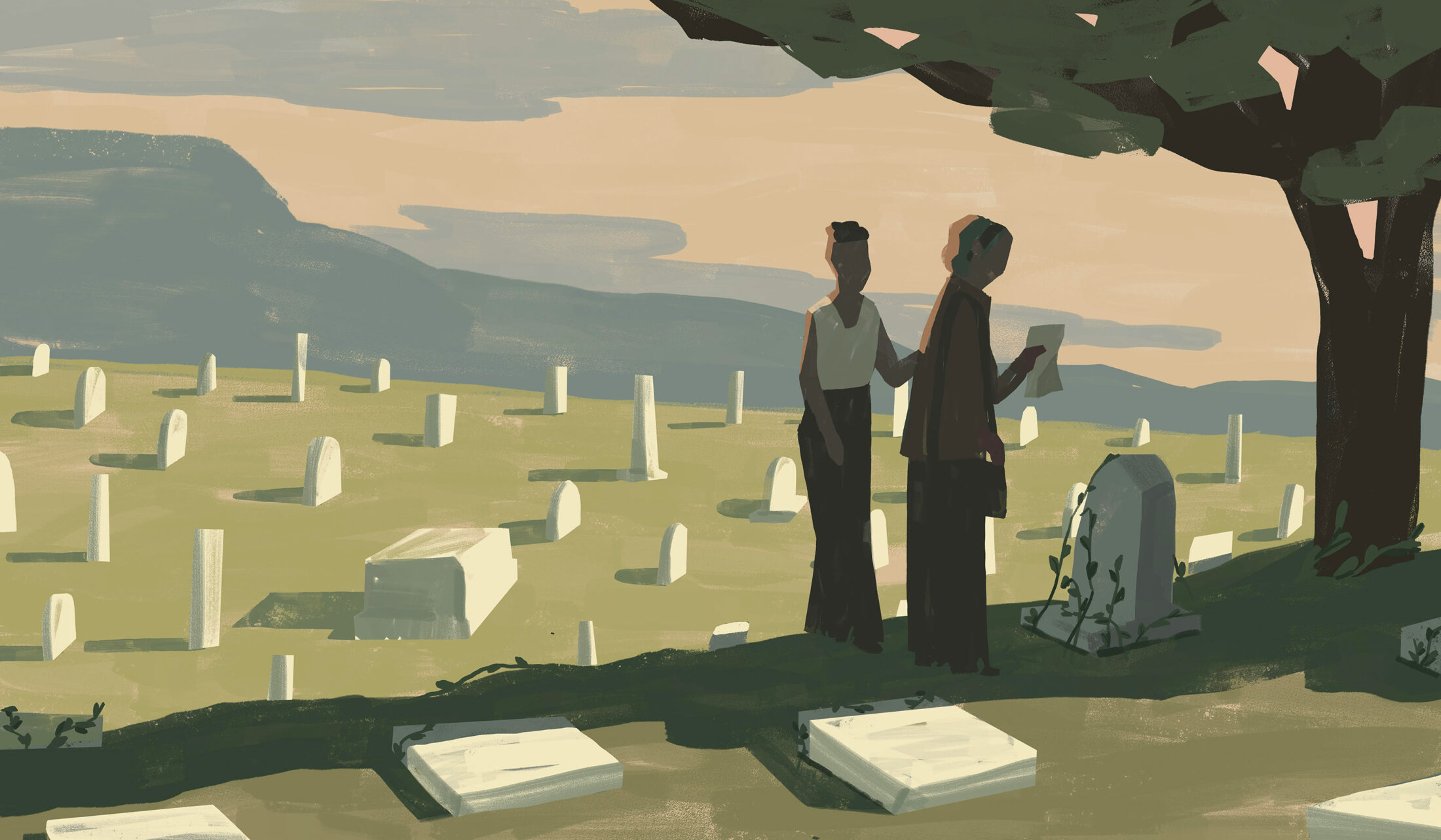
Paradise Extended
As Natalie Rose Richardson searches for her great-grandfather’s grave in a historically segregated cemetery, she confronts the American notion of paradise and the walls erected to protect it.
